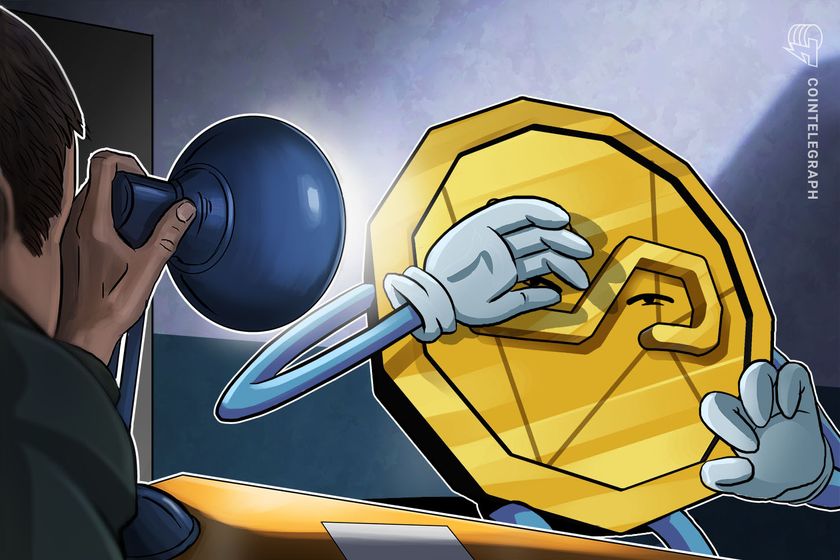In an email, Tether said Cake DeFi is controlled by “another corporation that resides in Singapore,” precluding it from redeeming USDT. Tether CTO Paolo Ardoino says this has been in place since 2020.
News
Stablecoin issuer Tether has reportedly changed its terms of service (ToS) in Singapore. An email shared by the CEO of decentralized finance protocol Cake DeFi on Sept. 25 shows changes to the company’s ToS prohibiting certain customer bases from redeeming Tether (USDT).
Cake co-founder and CEO Julian Hosp shared the email received from Tether, in which the company stated it cannot redeem USDT for United States dollars due to changes in its ToS.
Ok, so, I won’t be able to tell you if redeeming $USDT into $USD is actually possible, due to being in #Singapore, which was a recent change to the @Tether_to ToS from one day to another. Interesting. pic.twitter.com/1YzNqkbjMO
In a post on X (formerly Twitter), Hosp stated that he is unsure whether Cake could redeem USDT into U.S. dollars due to being based in Singapore.
The key changes to the ToS of Tether include restricting its onboarding standards and “corporates controlled by another entity, directors, and shareholders residing in Singapore are no longer permitted to be Tether customers.”
The term “controlled by another entity” confused many in the crypto community, including Cake DeFi, which was informed that it is “controlled by another corporation in Singapore. Accordingly, you will not be permitted to be issued or redeemed from the platform.”
Tether CTO Paolo Ardoino refuted speculation around the mail calling it a FUD. Ardoino claimed the policy change in question has been applicable since 2020, however, Tether didn’t answer to queries on why Cake DeFi was notified earlier in Sept. 25 about the same.
Before spreading FUD it would be great if you guys did take a look at webarchive… This is Jan 2022….And if you open the link below: Last updated: May 12, 2020…Again, take a moment to search and verify information before YOLO posting.https://t.co/dMbDCxwbdu https://t.co/K7ugOrZMNs pic.twitter.com/NPnitUBbpY
Related: Singapore’s central bank slugs Three Arrows founders with 9-year ban
X users highlighted Tether’s recent change in ToS comes amid a major crypto money laundering scandal in Singapore where assets seized from the bust have swelled to over $2 billion.
1 month after the massive money laundering bust in Singapore, Tether restricts customers in Singapore
Crypto firms have flocked to SG recently for friendlier regs. This could be a huge blow
W/ the HKG crackdown, the gates to Asia are closing for the crypto cartel https://t.co/yVu79bJHgb
Another user speculated that the changes in the USDT redemption terms could be a Cake DeFi-specific problem, suggesting that the DeFi protocol is flagged as enhanced due diligence (EDD), and thus, it could be a partnership issue between the two firms.
This could be a @cakedefi issue specifically. It’s flagged as EDD – enhanced DD. I’m not suggesting anything is wrong at Cake, just that it could be specific tether / cake relationship issues.
Collect this article as an NFT to preserve this moment in history and show your support for independent journalism in the crypto space.
Magazine: Asia Express: Tencent’s AI leviathan, $83M scam busted, China’s influencer ban




